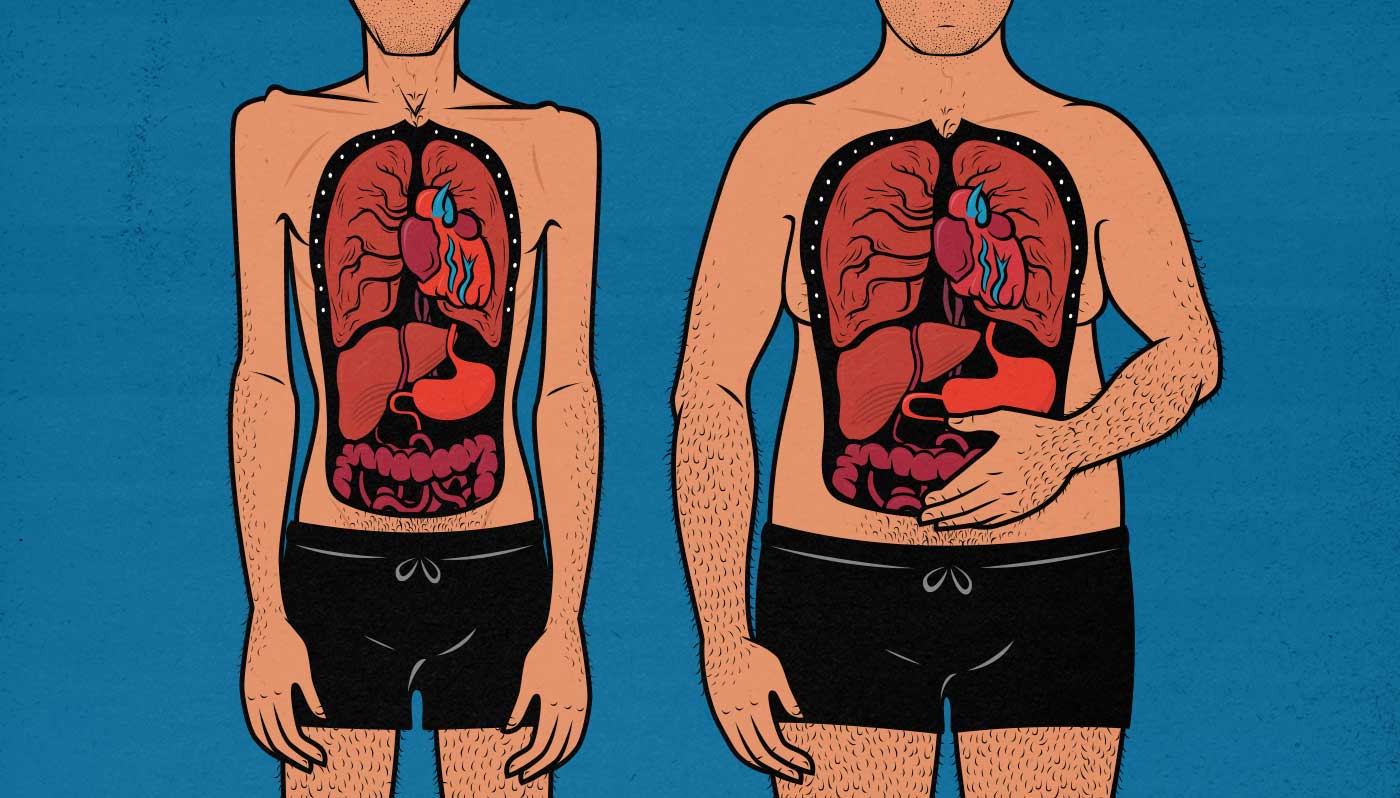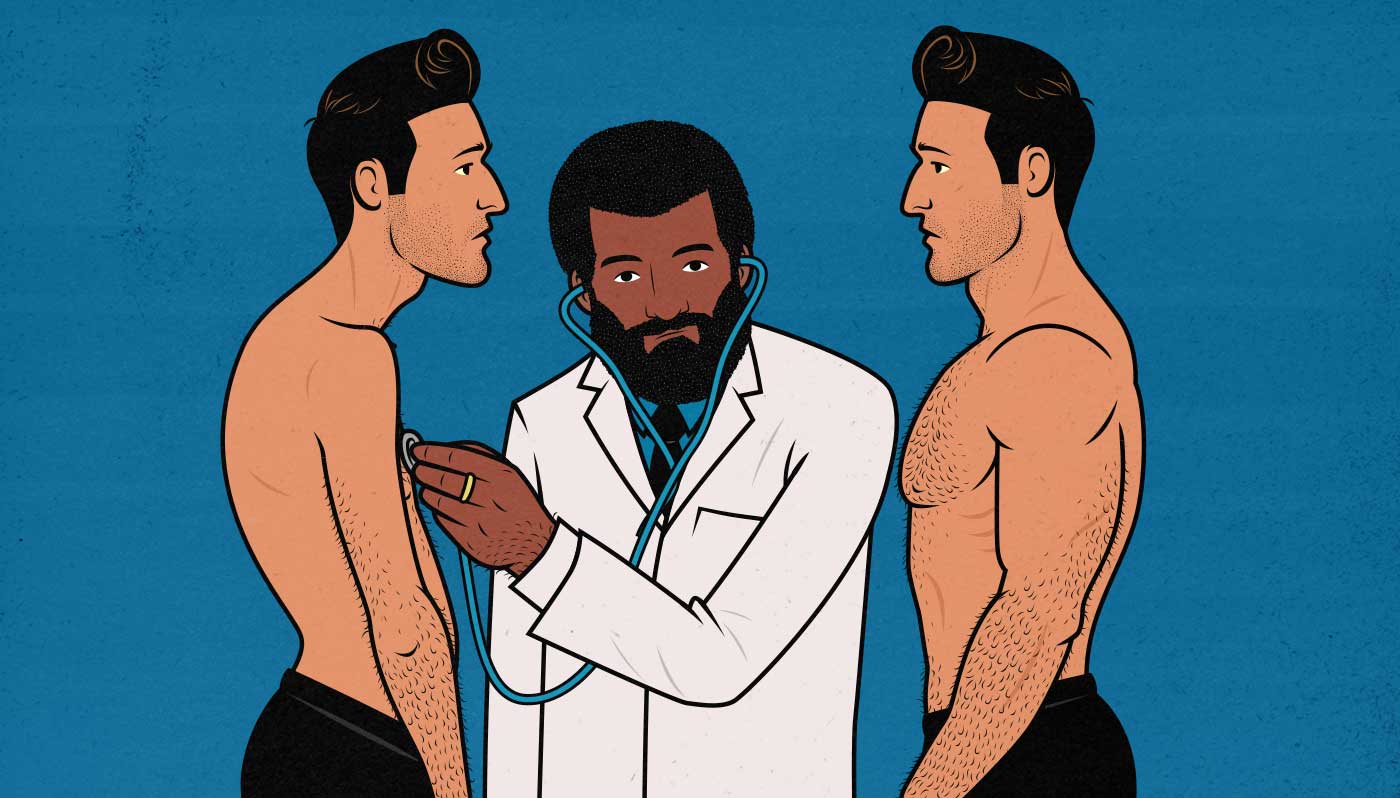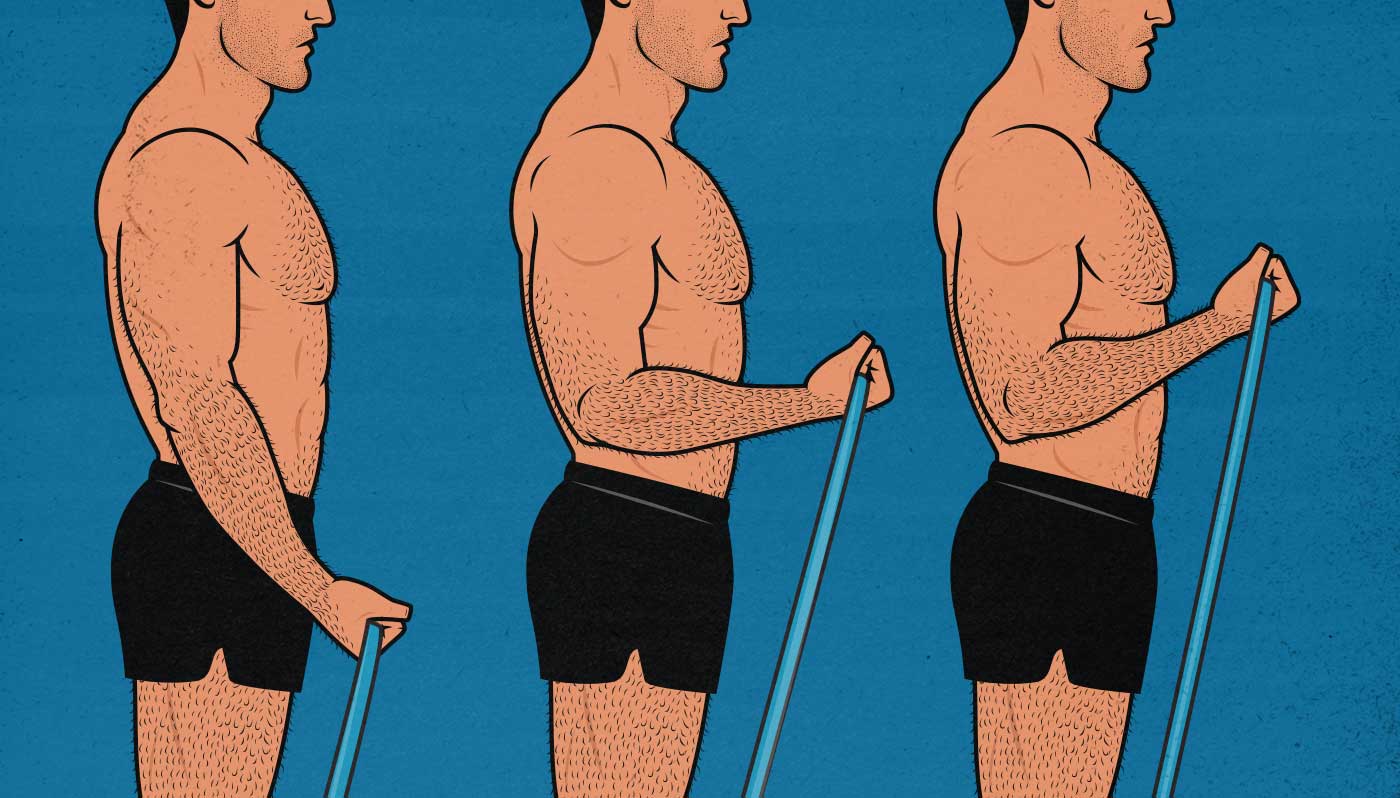Posts by Shane Duquette
Protected: Weight Lifting Calorie Calculator
A Review of Interesting Muscle-Building Research for Skinny Guys
In this article, let’s take a closer look at some of the most interesting research that could help us ectomorphs, hardgainers, and skinny guys bulk up, including studies looking into:
- How important are bicep curls for building bigger arms?
- Does muscle memory really exist?
- How long should we rest between sets?
- Does doing more sets increase muscle growth?
- What happens if we bulk on a ketogenic diet?
- Are high-protein diets healthy?
- Does having casein for bed help with muscle growth?
- Are 5×5 workouts good for building muscle?
- Are 10×10 German Volume Training workouts good for building muscle?
- Are push/pull/legs splits good for building muscle?
- Which lifestyle intervention caused simultaneous muscle growth and fat loss?
All of those answers and more inside.
Read MoreHardgainers: Why Is It So Hard for Skinny Guys to Gain Weight?
It’s common for skinny “hardgainers” to have trouble gaining weight. We’re in the midst of an obesity epidemic, surrounded by people who gain weight by accident, and yet no matter what we do, we can’t budge the scale.
“Just eat more.” I know. I’ve heard it, too. That advice isn’t wrong, but it’s hard to eat more when we’re fighting against faster metabolisms, smaller stomachs, and humbler appetites. Sometimes when we eat more food, our metabolisms get faster, gobbling up the extra calories, preventing us from gaining weight. We’ll explain all of that.
There are proven methods that can help us gain weight. We’ve helped tens of thousands of skinny guys bulk up. We’ve done it ourselves. We’ll teach you how to do it, too.
There are advantages to being a hardgainer. Once you learn how to take advantage of your body type, you may be able to build muscle faster and more leanly than the average person.
Read MoreIs Bulking Healthy? Can We Make it Healthier?
Different people bulk in different ways, and so depending on how we approach it, it can be either good or bad for our general health. However, as a general rule, bulking involves habitual weight training, eating a lot of whole food, eating plenty of protein, getting an abundance of good sleep, and gaining muscle mass, all of which are incredibly healthy.
One of the main reasons that Marco and I are so passionate about helping skinny guys bulk up is because we’re so confident that it can profoundly improve your health, as it did for the two of us.
Still, there are some things to watch out for, as well as some things we can do to make bulking even healthier, so let’s go into more detail about how we can bulk up in a way that’s good for our general health.
Read MoreBeginner Bodyweight Workout Plan for Building Muscle—Full Guide
Bodyweight workout plans can be incredibly good for building muscle, especially in your upper body. If you put enough mechanical tension on your muscles, they’ll grow. That’s just as true with bodyweight exercises as it is with free weights or exercise machines.
However, most bodyweight workout plans are designed to help people get fitter, not more muscular. If you’re trying to build muscle, that won’t cut it. To maximize your rate of muscle growth, you need to train for muscle growth. You need to do bodyweight hypertrophy training.
In this article, we’ll teach you the best bodyweight exercises for building muscle, then give you a full hypertrophy training workout routine you can do at home.
Read MoreHow Big Should Men Build Their Legs?
What’s the ideal male leg size? How often should we be squatting and deadlifting? How much emphasis should we put on leg training if our goal is to improve our health, general strength, and appearance? What’s interesting is that there are popular views at opposite ends of the spectrum:
- Some aesthetics-oriented approaches have us spending more of our time doing upper-body training: more incline bench pressing, chin-ups, overhead pressing, and biceps curls. If lower-body training is included at all, it’s often lighter stuff, such as one-legged squats and Romanian deadlifts.
- Some strength training programs tell us to focus on getting stronger at the Big Three lifts: the squat, bench press, and deadlift. In those circles, it’s common for every workout to start with a few sets of strenuous back squats. Is that a good way to build a strong and attractive physique?
If we’re trying to build strong, healthy, and attractive physiques, how big should our legs be? How often should we train them? And what lower-body lifts should we choose?
Read MoreDo Resistance Bands Build Muscle? Yes, But How Well?
Resistance bands are cheap, portable, and convenient. They challenge our muscles. What more do we need? There’s a whole grain of truth there. Resistance bands can stimulate muscle growth. Plenty of people get great results from training with them. You don’t need anything more.
But what if you’re trying to build muscle as quickly, efficiently, or painlessly as possible? Are resistance bands the best tool for that? That’s a different question. In that case, we need to compare resistance bands against the alternatives: bodyweight exercises, dumbbells, barbells, and exercise machines.
So, how do resistance bands compare to callisthenics and free weights? Let’s delve into it.
Read MoreHow to Avoid Getting Sick While Bulking
Most of us know that working out, eating a good diet, and getting plenty of good sleep will improve our health. So why, then, whenever we start working out, do we keep getting sick. Isn’t working out supposed to make us healthier? Is getting sick every time we try to bulk up just an unavoidable part of our skinny curse?
Nothing can ruin the momentum of a good bulk like getting a cold, the flu, or—every skinny guy’s worst nightmare—the stomach flu. I can’t tell you many dozens of pounds I’ve lost to the stomach flu over the years. Getting sick while leading a sedentary life is bad enough, but it feels all the worse when we’re in the middle of a bulking routine. We lie there in fear, breathing through our mouths, certain that our muscles are being eaten away, but unable to muster the willpower to shovel down enough food to maintain our body weight.
Our bulks eventually resume, those pounds come back, and regaining muscle is a total breeze compared to gaining it in the first place. But still, better to never get sick in the first place.
Nothing will guarantee that we won’t get sick, but there are a few things we can do to reduce our risk.
Read MoreHow to Deadlift for Muscle Growth
Deadlifts are one of the only true full-body lifts. They challenge our muscles from our fingers down to our toes and stress our bodies from the skin on our palms all the way down to our bones. They’re hard, tiring, and absolutely amazing for building muscle, gaining strength, improving our fitness, and becoming much better-looking.
When it comes to bulking up, the only lift that can rival the deadlift in terms of sheer muscle growth is the squat (and especially the front squat). Even then, the deadlift has a few unique advantages:
- Deadlifts bulk up our traps, spinal erectors, and glutes, as well as a number of other muscles in our upper backs, all of which are great for improving our aesthetics.
- Deadlifts are one of the best ways to increase bone density and spine health, which is great for our health and longevity.
- The strength we develop with deadlifts transfers near-perfectly to our daily lives, making us look strong because we are strong.
- Squats and deadlifts train different muscles, with the front squat emphasizing the quads and upper back and the deadlift emphasizing the hamstrings, glutes, and entire back.
As with all the big lifts, though, there are several different ways of deadlifting, each with different pros and cons. And given how many different sorts of adaptations deadlifts provoke, it’s not surprising that some ways of deadlifting are much better for building muscle than others.
Most guys who are interested in strength favour the conventional deadlift. That’s wise—and we’ll explain why—but they deadlift for low reps and drop the bar to the ground after every repetition, making it worse for building muscle mass.
The most heinous sin, though, belongs to the bodybuilders who forego the deadlift altogether, thinking it isn’t a good lift for gaining muscle. That couldn’t be farther from the truth.
Read MoreThe Benefits of Goblet Squats & Front Squats
Squats are the biggest lift, engaging the most muscle mass and stimulating the most muscle growth. And of all the squat variations, front squats are the best for building muscle.
Powerlifters have low-bar squats, which allow them to lift more weight. Athletes have high-bar squats, which allow them to focus on their quads. We usually use goblet squats and front squats, which allow us to stimulate more overall muscle growth, especially in our postural muscles.
Front-loaded squats are a better default for almost everyone else. They let us squat deeper, thicken our back muscles, straighten our posture, and bulk up our serratus muscles. They’re also the safest squat variation, rivalled only by safety-bar squats and hack squats.
Here’s why.
Read More








